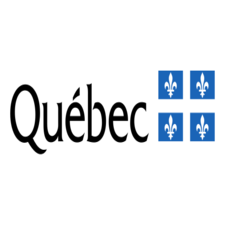Hot spots
Type of resources
Topics
Keywords
Contact for the resource
Provided by
Formats
Representation types
Update frequencies
status
-

## Information document concerning the results of threat analysis This document provides additional information to better understand and use the threat data produced as part of the integrated recovery approach. This data highlights the sectors where the impacts of threats on occurrences listed by the [Quebec Natural Heritage Data Center (CDPNQ)] (https://www.quebec.ca/gouvernement/gouvernement-ouvert/transparence-performance/indicateurs-statistiques/donnees-especes-situation-precaire) are the most important. # #Quelles data included in the analyses? The analyses focus on the following 67 elements (wildlife species): * Amphibians: swamp frog, boreal chorus frog, western chorus frog, purple salamander, Adirondack and Appalachian pop., mountain dusky salamander, mountain dusky salamander, Appalachian pop., Appalachian pop., northern dusky salamander,, four-toed salamander * Insects: Atlantic tawny * Mammals: pygmy weasel, rock vole, forest vole, Scots vole, Cooper's vole-lemming, northern bat, eastern pygmy bat, Gaspé shrew, Long-billed Shrew, Little Squirrel, Great Lakes Plains Pop., Great Lakes Plains Pop., Little Brown Bat, Eastern Pipistrelle * Birds: Golden Eagle, Harlequin Dipper, Eastern Pop., Eastern Pop., Pratensis Bunting, Grasshopper Pratensis,, Pratensis, Grasshopper Sparrow, Pratensis, Bicknell's Thrush, Horned Grebe, Black Tern, Short-eared Owl, Short-eared Owl, Shore Swallow, Shore Swallow, Shore Swallow, Shore Swallow, Shore Swallow, Bank Swallow, Chimney Swift, White-headed Plover, Atlantic Pop. yellow, Roseate tern * Fish: savory shad, mesh pike, vermiculated pike, vermiculated pike, madcat, copper redhorse, river knight, spring cisco, northern crapet, northern sunfish, sand stinger, sand stinger, sand stinger, yellow sturgeon, lake sturgeon, black sturgeon, black sturgeon, black sturgeon, black sturgeon, black sturgeon, black sturgeon, black sturgeon, black sturgeon, Atlantic sturgeon, black sturgeon, Atlantic sturgeon, black sturgeon, Atlantic sturgeon, black sturgeon, Atlantic sturgeon, Atlantic sturgeon, black sturgeon, Atlantic sturgeon, black sturgeon, Atlantic sturgeon, black sturgeon, Atlantic sturgeon, Atlantic sturgeon, black sturgeon, Atlantic sturgeon, black sturgeon, Atlantic sturgeon, black sturgeon, black sturgeon, rock rainbow, pop. from the south of the St. Lawrence Estuary * Reptiles: brown snake, northern watersnake, northern ribbonsnake, spotted snake, green snake, northern collared snake, northern collared snake, wood turtle, turtle geographic, Blanding's turtle, musky turtle, spiny softshell turtle Other species, including floristic species, could be added to the analyses. Threats: Threats are activities that, by their location, intensity, or time in which they occur, generate stress (see next section) that affects elements of biodiversity. In total, the available data concern 16 threats: * Future conversion risk: Development of residential, industrial and commercial areas; * Development of residential, industrial and commercial areas; * Future conversion risk: Annual agriculture (field crops); * Perennial agriculture; * Quarries and sandpits; * Quarries and sandpits; * Roads; * Roads; * Roads; * Roads; * Total withdrawal of forest cover; * Partial withdrawal of forest cover; * Partial removal of forest cover; * Educational treatments; * Motorized vehicles; * Boating; * Boating; * Drainage in agricultural environments; * Phragmites australis; * Rhamnus cathartica; * Increase in predation by mesopredators; * Nutrient load. # #Méthode for calculating the impact score * The method used to calculate the impact score is presented in the document Integrated Recovery Approach for Threatened or Vulnerable Species — Development of a New Tool for Conservation Planning. * The results are presented using a cartographic grid in which each 10 km x 10 km plot shows the cumulative impact of a threat on the occurrences present in this portion of territory. The cumulative impact is obtained by adding up the impact ratings of all the occurrences present within the plot. This accumulation makes it possible to identify, using a color code, the “hot spots” of a threat on occurrences. The absence of color indicates the absence of calculated or listed impacts on occurrences. The color gradient illustrates the variation in the cumulative impact of this threat on all occurrences in the plot, from the lowest score (yellow) to the highest (red). * Each threat is presented on a separate layer, while an additional layer called “Threat Compilation” shows the sum of threats across all occurrences in a plot. # #Quelle is standardized classification used for analysis? The threats analyzed were defined according to the document Standardized Classification of Threats Affecting Biodiversity — Definitions for the Quebec Conservation Data Center (CDC) v1.0, published in 2021.**This third party metadata element was translated using an automated translation tool (Amazon Translate).**
 Arctic SDI catalogue
Arctic SDI catalogue